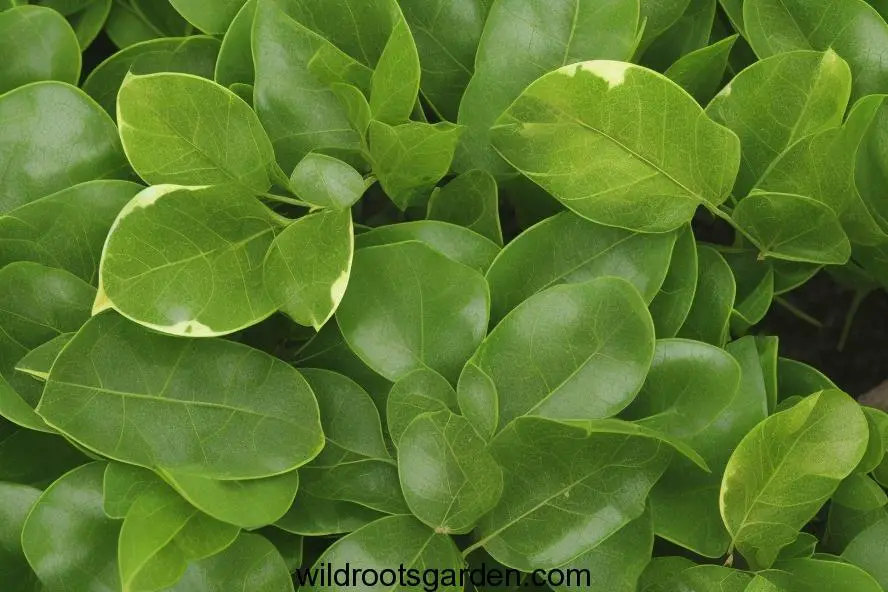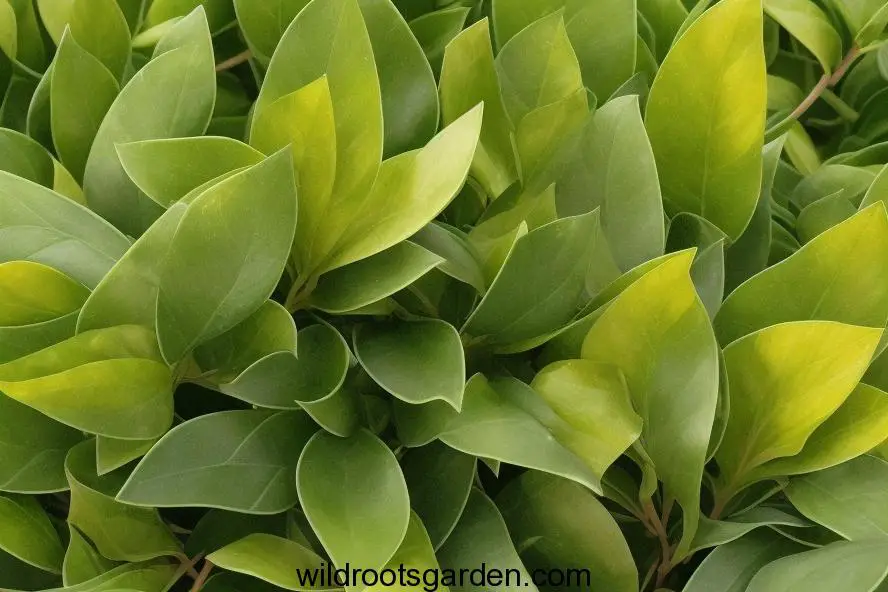Yellow Tips on Boxwood Leaves. A number of things, such as nutritional deficiencies, irrigation issues, pests or diseases, and winter damage, can lead to yellow tips on boxwood leaves. It’s crucial to determine the cause if you observe yellow tips on your boxwood leaves so that you can take remedial action.
Yellow tips on boxwood leaf tips are frequently caused by nutrient insufficiency. To thrive, boxwoods require a variety of nutrients, such as nitrogen, phosphorus, potassium, magnesium, and iron. The leaves will turn yellow if the plant is not receiving enough of one or more of these nutrients. You can fertilize your boxwoods with a balanced fertilizer to make up for a nutrient shortage.
Yellow tips on boxwood leaf tips can also be caused by water issues. Regular watering is necessary for boxwoods, but they shouldn’t be drowned or overwatered. The roots will rot and the foliage will turn yellow if the soil is too damp. On the other hand, the leaves will also turn yellow if the soil is very dry. Deeply and infrequently water your boxwoods to prevent watering issues.
Yellow tips on boxwood leaves can also be caused by pests and illnesses. Boxwoods are vulnerable to a variety of pests and diseases, such as boxwood psyllid, boxwood blight, and boxwood leaf miner. The yellowing of the leaves can be brought on by several pests and illnesses. You can routinely inspect your boxwoods for pests and diseases and treat them with an insecticide or fungicide as necessary.
Yellow tips on boxwood leaves might potentially be a result of winter damage. Cold weather has the potential to harm boxwoods, particularly if plants are not adequately covered. If the leaves are subjected to extremely cold conditions, they may become yellow or brown. You can wrap your boxwoods in hessian or another protective material to prevent winter damage.
Decoding the Mystery of Yellow Tips on Boxwood Leaves
Yellowing tips on boxwood leaves can result from a combination of factors. Here are some of the most common reasons behind this phenomenon:
Soil pH Imbalance: Impact on Leaf Health

The availability of nutrients to plants is significantly influenced by the pH of the soil. Yellowing leaves can be an indication of nutrient deficits if the pH of the soil is either too high or too low. Boxwoods prefer neutral to slightly acidic soil conditions. To provide your plants with the best possible habitat, measure the pH of your soil and add the required amendments.
Inadequate Watering Practices: Finding the Right Balance
Boxwood plants can become stressed by improper watering habits, which will darken the leaves. The yellowing of leaf tips can be caused by either overwatering or underwatering. Make sure the soil drains well, and water the plants sparingly but deeply. Around the base of the plants, spreading a layer of mulch can aid in moisture retention and control soil temperature.
Nutrient Deficiencies: Nourishing Your Boxwood Plants
Yellowing tips could be a sign of a deficiency in important nutrients like nitrogen, iron, or magnesium. Your boxwoods can be revitalized with the help of balanced fertilizer made specifically for evergreen plants. Throughout the growing season, regular feeding can encourage strong foliage development and lush, green leaves.
Pests and Diseases: Identifying and Combating Threats

Boxwoods are prone to a number of pests and diseases that can weaken the plants and cause yellowing of the leaves. Boxwood leafminers and spider mites are frequent pests, and illnesses like boxwood blight can have an adverse effect on the health of the leaves. Check your plants frequently for any symptoms of illness or infestation, and if you find any, immediately administer the necessary treatments.
Environmental Stressors: Adapting to External Factors
Boxwood leaves can suffer damage from environmental stressors such as extremely high or low temperatures, severe winds, or too much sunlight. By providing some shade, windbreaks, and constant watering during hot spells, you can protect your plants from harsh weather. With this preventive technique, stress-related yellowing can be avoided.
Root Compaction: Ensuring Healthy Root Systems
Yellowing leaves can result from stunted root development and inadequate nitrogen uptake in compacted or inadequately aerated soil. To enhance soil structure and encourage a strong root system, aerate the soil surrounding your boxwoods and limit foot traffic over their root zones.
FAQs
Q: Can I use regular garden soil for planting boxwood?
A: It’s recommended to use well-draining, slightly acidic to neutral soil amended with organic matter for optimal boxwood growth.
Q: How often should I water my boxwood plants?
A: Water deeply but infrequently, allowing the soil to dry out slightly between watering sessions.
Q: What is boxwood blight and how can I prevent it?
A: Boxwood blight is a fungal disease. To prevent it, ensure proper spacing between plants, good air circulation, and sanitation practices.
Q: Are yellow leaves a sign of over-fertilization?
A: Yes, over-fertilization can cause leaf discoloration. Follow recommended fertilization guidelines to avoid this issue.
Q: Can I prune my boxwood to remove yellow leaves?
A: Pruning can help remove affected leaves, but addressing the underlying cause is crucial to prevent further yellowing.
Q: Is it possible to transplant boxwood to a different location?
A: Transplanting can be done during the dormant season. Ensure proper care and watering after transplantation.
Final Thoughts: Nurturing Vibrant and Healthy Boxwood Leaves
As you embark on the journey of tending to your boxwood plants, the mystery of yellow tips on their leaves no longer remains unsolved. By addressing soil pH, maintaining proper watering habits, providing adequate nutrients, preventing pests and diseases, and mitigating environmental stressors, you can ensure the lush green beauty of your boxwood foliage. Remember to observe your plants closely, respond to their needs promptly, and relish in the rewards of flourishing boxwood leaves that adorn your landscape.

